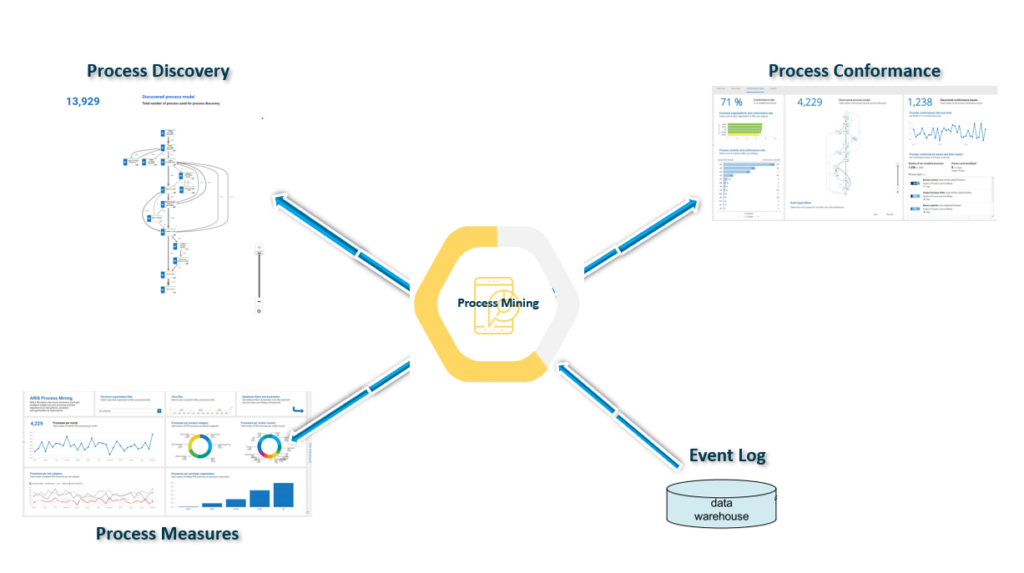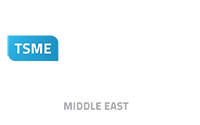
By: Elangovan Dakshinamurthy, Manager of Technology and Consulting Services
Organizations are constantly looking for new ways to excel and remain ahead of the competition as they focus on developing their business. With process mining, companies discovered a way to gain process intelligence by using this analytical discipline to foster a data-driven understanding of such processes. Thus, it became a seamless journey to elevate process efficiency, identify bottlenecks, reduce errors, and optimize workflows as organizations see their processes in action.
Process mining has been the go-to solution for businesses aiming to improve operational process efficiency and harvest significant benefits to achieve excellence. But what is process mining precisely? It can be explained as a field of data analysis and a powerful technique that focuses on discovering, monitoring, and improving real processes within organizations, all to have the necessary capabilities involving offering valuable insights into how processes are actually executed.
Forrester projects that 83% of business decision-makers will raise process optimization adoption in customer journey mapping, reflecting the importance of process mining as a tool in the process optimization toolkit. This is the beauty of technology for different industries, it is not set in stone. Innovations keep on emerging or improving to bring forth valuable technology such as process mining. In this ever-changing world, organizations are being offered more evolved solutions to keep steady growth through the new opportunities being created with each technological advancement.
Process Mining: Igniting Opportunities for Process Excellence
Process mining creates a pathway for organizations to fully understand and improve their business processes. Not that long ago, organizations solely relied on surveys, interviews, and other subjective methods to capture information about their processes, methods that are time-consuming and unpredictable and could result in inaccurate information. Process mining emerged to offer a more subjective and data-driven view of processes, leading to more effective improvements and a comprehensive understanding of processes.
How does it work? Process mining, a family of techniques, allows organizations to analyze their business processes by extracting data from diverse sources such as event logs. This data is used to create a visual representation of processes in a comprehensive dashboard that enables the organization to closely monitor the process performance and measure it. As a result, organizations can have a clear picture of how their processes work while distinctly identifying inefficiencies and bottlenecks, revealing their root causes and symptoms, and understanding how to fix them.
Igniting new opportunities for process and operational excellence, Gartner expects that “by 2025, 80% of organizations driven by the expectations of cost reduction and automation-derived enhanced process efficiency will embed process mining capabilities in at least 10% of their business operations.”
Process mining is viewed as a catalyst for excellence and not a mere tool that is a means to an end. It creates new opportunities for excellence in many ways, starting from supporting organizations to successfully enhance efficiency and productivity, empowering them to make more strategic decisions, and playing a distinguished role in accelerating innovation. Businesses can smoothly identify new opportunities for innovation through process mining, all by understanding how their processes actually work.
Leveraging process mining enables organizations to gain a competitive advantage. This is attained as process mining contributes to optimizing processes and delivering superior outcomes for customers, leading to considerable benefits. The most notable advantages of this would be reaching a boost in market share along with scoring higher profitability, allowing organizations to celebrate new accomplishments, and reaping the benefits of new opportunities presented by process mining.
Process Mining as an X-ray for Processes
Think of process mining as an X-ray that shows how processes are running and offers unparalleled insights into operations and processes. Much like how an X-ray reveals the inner workings of the human body, process mining shows exactly how processes work through the following steps:
- Revealing inefficiencies and bottlenecks within processes that are difficult to detect, allowing the identification of issues and offering a clear picture of processes.
- Creating a visual representation of processes, enabling organizations to see and spot areas for improvement while obtaining objective and fact-based insights.
- Providing clarity to accurately diagnose and reveal inefficiency symptoms, showing organizations process problems so they can implement effective solutions.
Process mining is considered a tool that unlocks power that truly matters for a truly successful business. As it gives organizations a way to identify and fix process inefficiencies, it ensures elevated operational efficiency, supports data-driven insights and decisions, and empowers capturing automation and hidden value opportunities.
Having a powerful tool that acts as an X-ray for processes to seamlessly identify and fix challenges creates a doorway for organizations to completely reimagine their processes. This, subsequently, uncovers key benefits for excellence to provide businesses with multiple capabilities such as powerful analytical capacities, advanced process efficiency, enhanced customer satisfaction, reduced costs, and increased innovation opportunities.
Businesses have discovered the importance of process mining for operational and process efficiency. Forrester uncovered how digital transformation journeys could face a delay due to misunderstood processes. The report shows that manual routing and process gaps cause more complications, with 37% of business and technology leaders experiencing these issues.
Process mining serves as a potent tool for enhancing compliance within organizations. By comparing the model process flow with the actual process flow derived from event logs, commonalities and discrepancies are identified. This analysis yields conformance measures, offering support for conformance analysis to detect deviations from the intended model. These insights help determine whether the designed model needs refinement or corrective actions must be taken in the actual process.
Furthermore, process mining can be instrumental in enforcing and assessing compliance levels and risks. It aids in identifying performance deviations, enabling organizations to proactively address issues and optimize their processes.

Use Cases: Process Mining in Action
In the past years, process mining has successfully supported creating excellence within organizations across industries around the world. Organizations that adopted process mining have reported great benefits varying from cost reduction to enhanced customer experience and compliance. Process mining can be used to improve a wide range of business processes, including financial processes, IT service management, and insurance processes.
Process mining in financial processes unveiled remarkable success with several use cases showing a substantial difference made through the technology. Based on an AIMultiple research issued in 2023, Accounts Payable processes highlighted massive efficiency with process mining helping to identify the root causes for incorrect invoices. Process mining can lead to a 67% reduction in duplicate payments for customers, according to the research, after identifying the real reasons for this issue that causes added workload.
The research by AIMultiple shows some case studies in IT service management that found significant benefits through process mining, with automation opportunities being one of those important benefits. Process mining has been used by businesses in this industry to automate and offer quicker response times. Research findings indicate that companies using process mining tools in the field experienced a 65% reduction in resolution times.
Process mining for insurance processes produced spectacular outcomes, particularly in risk assessment for businesses in the insurance sector. Process mining technologies enable insurance businesses to recognize risks to facilitate the underwriting process as well as assist insurers in monitoring and mapping the steps in the underwriting process flow while reflecting the key risk variables, as noted in AIMultiple research.
To Sum Up,
Process mining is the X-ray for processes that organizations need to thrive in today’s competitive business landscape. Its ability to provide transparency, data-driven insights, and process optimization opportunities makes it an indispensable tool for achieving excellence. By embracing process mining, businesses can navigate the complexities of modern business with precision, unlock new opportunities for improvement, and reach unmatched levels of excellence. In an era where innovation and efficiency are key drivers of success, process mining is the way forward for organizations striving to reach new heights.
About the Author
Elangovan Dakshinamurthy is the Manager of Technology and Consulting Services at Technology Strategies Middle East (TSME). With over 25 years of experience, he successfully built a solid foundation in consulting, designing, and implementing business processes and technology solutions across diverse industries. Mr. Dakshinamurthy began his career as a mechanical engineer and spent nearly a decade specializing in the implementation of enterprise asset management and equipment tool management processes in SAP. For the past decade, he expanded his expertise to encompass various areas, including business process modeling, optimization, simulation, robotic process automation, and process mining.
Mr. Dakshinamurthy is driven by a passion for continuous learning and leveraging modern technologies to contribute to the growth and success of organizations. Throughout his career, he found immense satisfaction in staying abreast of emerging technologies and applying them to deliver effective solutions. His combined domain knowledge and technical proficiency enable him to provide valuable insights and drive positive outcomes for businesses.



